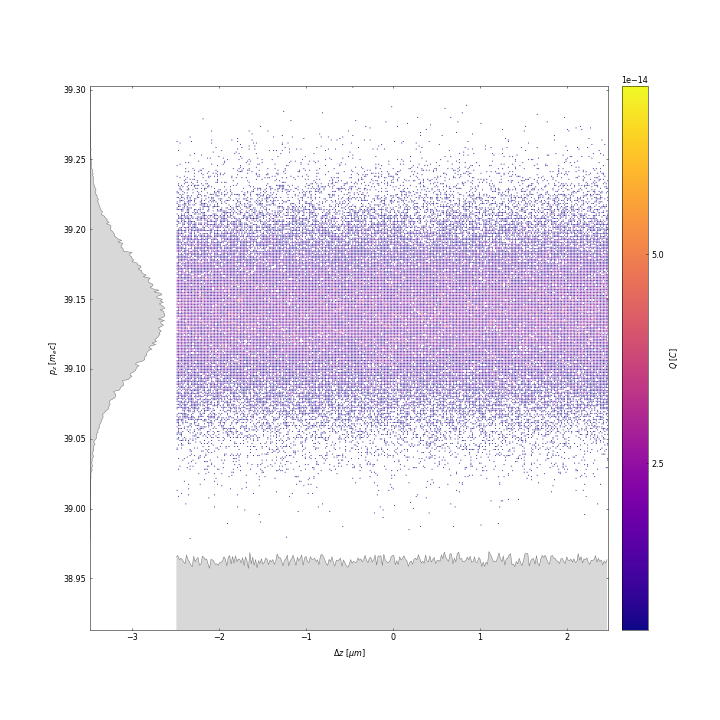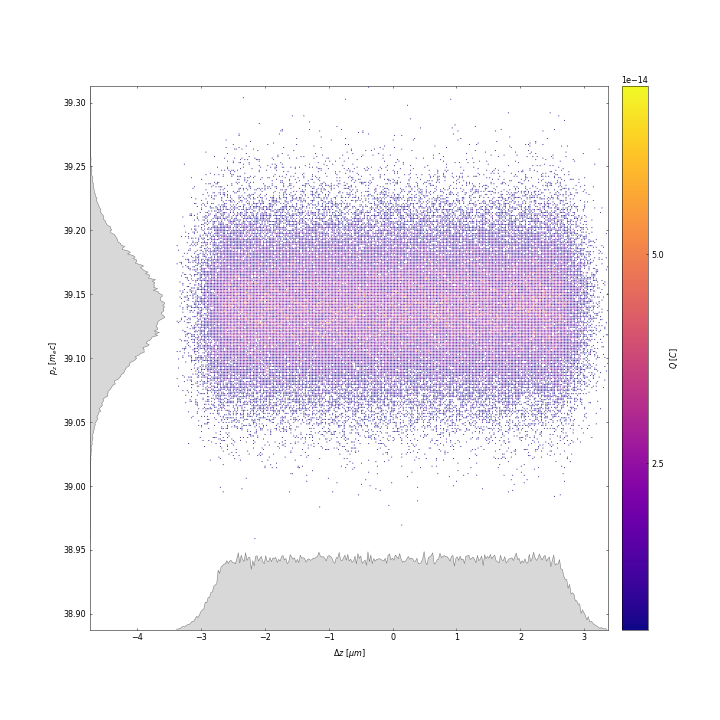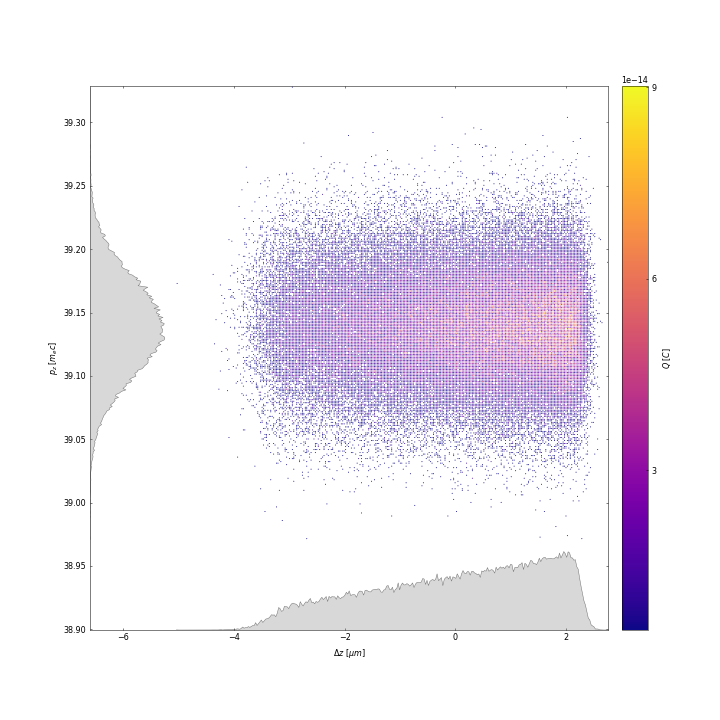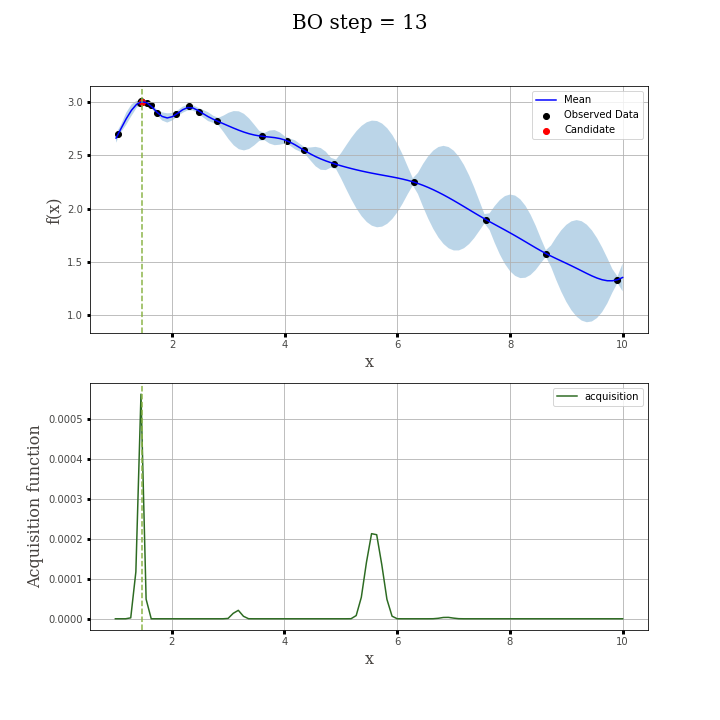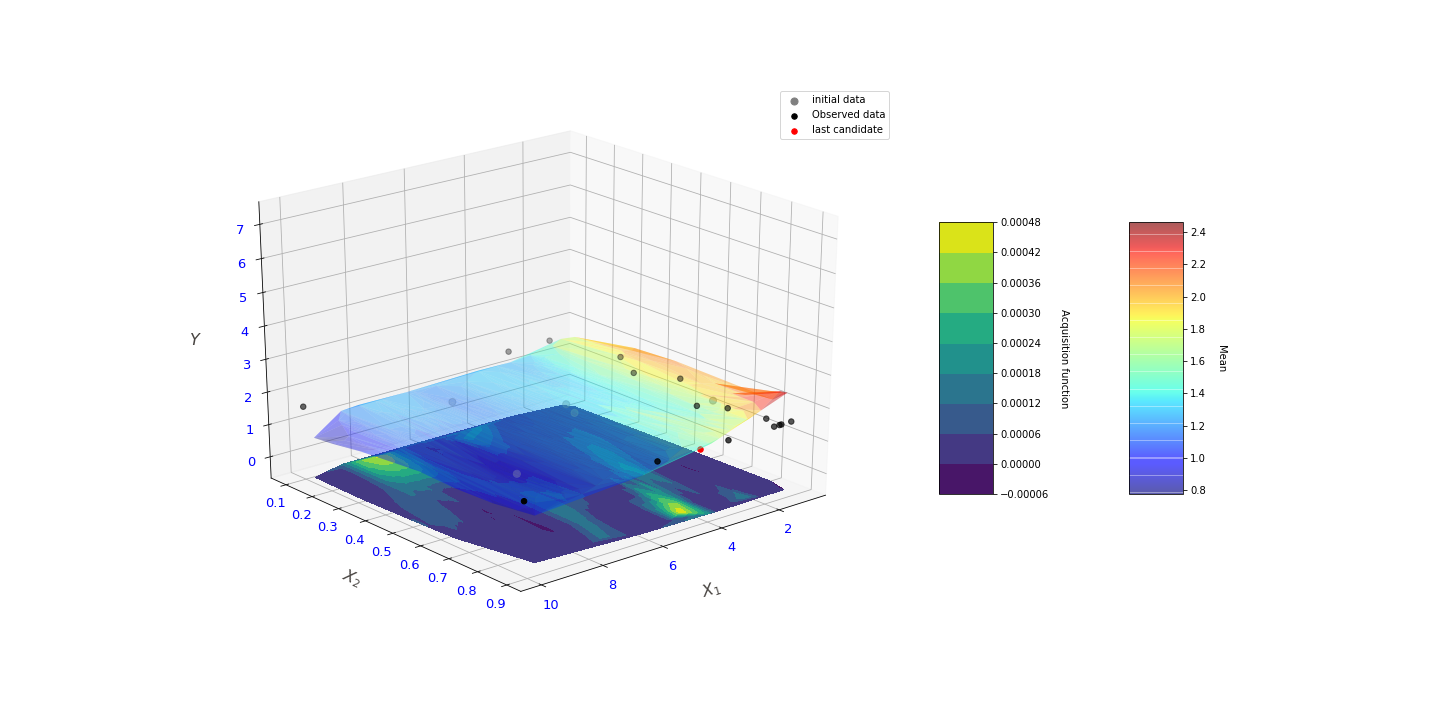Application of Bayesian optimization to improve beam quality of laser plasma accelerators.
At the moment, traditional accelerators have their limits, and we need to find alternatives for them. Laser plasma accelerators (LPA) are very inter- esting as a replacement for conventional accelerators, because of their small size and large accelerating fields. However producing high-quality beams concerning industrial needs requires a meticulous balancing of a variety of physical effects and, as a result, is both conceptually and experimentally hard.
This work investigates how to optimize the source of electrons in the LPA for given requests from industry or academic institutions. Particularly, the use of Bayesian Optimization on LPA parameters to achieve 150 MeV acceleration with a maximum energy conversion efficiency from the laser to the electron beam is studied.
The study can be divided into 4 main tasks:
- Task 1. Create appropriate objective functions and evaluation metric, and analyze and select the set of parameters to be optimized.
- Task 2. Investigate Bayesian Optimization with 1 parameter and compare results with optimum found by GridSearch
- Task 3. 2 parameters optimization
- Task 4. 9 parameters optimization
Three objective functions were used: absoulte error, energy conversion and artificial energy conversion. As evaluation metrics energy of the beam after acceleration and energy conversion were used.
During the study a new function has been created that changes the longitudinal profile of the beam. This function can be used in the future optimization study. Height of the trapezoid can be considered as a new parameter and increase dimension.
Fig.1 Longitudinal profile of the electron beam
Analysis of different parameters showed inefficiency of variation of only one parameter, since all of the laser and plasma and beam parameters are bounded with each other in non-linear way.
Main functions used to produce results in task 2 represented in the figure 2 are in the folder "Task 2/main_functions".Type of objectie function is a parameter that has to be chosen by user.
Fig.2 Bayesian Optimization process: 1 parameter
Main functions used to produce results in task 3 represented in the figure 3 are in the folder "Task 3/main_functions".Type of objectie function is a parameter that has to be chosen by user.
Fig.3 Bayesian Optimization process: 2 parameter
For the task 4 private library "libe_opt" was used and can not be reproduced by users. However results of the optimization of 9 parameters and main simulation analysis are showen in main notebooks in the folder Task 4.
In this work, a 30 percent energy conversion efficiency was achieved with electron acceleration to 222 MeV using a Bayesian optimization of nine parameters including all major plasma, laser, and electron beam parameters. All simulations were run without using the traditional PIC code, but with the computationally easier Wake-T code, which implements a quasi-static approximation. In this work, a simplified case was considered, when the electron beam was introduced externally.
In the future, this study can be carried out in three directions. The first direction is the study of parameter variation for the case where we consider how the electron beam was created. The second direction is to further find a more precise optimum region using the PIC code. The next step in this direction is to set up a real experiment with existing laser-plasma gas pedals and to use Bayesian optimization for real-time LPA regulation. The third direction is the study of hyperparameters of Bayesian optimization, i.e. different kinds of covariance functions in a Gaussian process, different kinds of acquisition functions, as well as the study of multi-objective Bayesian optimization.

